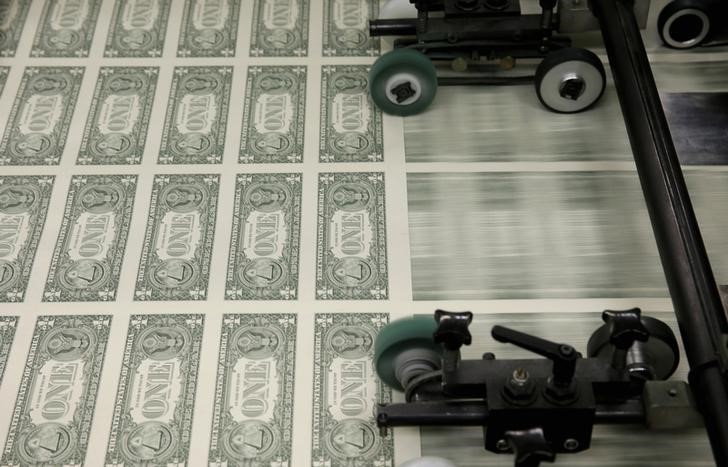Investing.com - The dollar pushed lower against against the other major currencies on Tuesday, after data showed that manufacturing activity in the U.S. expanded at the slowest rate in more than two years in August and as concerns over the prospect for growth in China continued to weigh.
The U.S. dollar index, which measures the greenback’s strength against a trade-weighted basket of six major currencies, was down 0.26% at 95.70, still holding above the eight-month trough of 92.52 hit last Monday.
The Institute of Supply Management said its manufacturing index fell to 51.1 from 52.7in July. It was the lowest reading since May 2013 and was below economists’ forecasts of 52.6.
In a separate report, Markit said the final reading of its manufacturing index fell to 53 from 53.8 in August. This was the lowest level since October 2013, but was slightly higher that the preliminary reading of 52.9.
The weak data added to doubts over whether the Federal Reserve will hike interest rates in September.
Investors were looking ahead to Friday’s U.S. jobs report for August, which could help to provide clarity on the likelihood of a near-term interest rate hike.
The U.S. dollar index, which measures the greenback’s strength against a trade-weighted basket of six major currencies, was down 0.26% to 95.71, holding above the eight-month trough of 92.52 set last Monday.
The dollar remained under heavy selling pressure after weak Chinese economic reports released earlier Tuesday added to fears over a China-led slowdown in global economic growth.
Manufacturing activity in China contracted at its fastest rate in three years in August, while service sector activity also slowed.
Wall Street fell sharply at the open on Tuesday and the worsening outlook for global equities underpinned demand for the low yielding euro and yen.
Investors often use low-yielding currencies to fund positions in higher-yielding currencies and equities, known as carry trades.
EUR/USD was last up 0.22% to 1.1236, holding below highs of 1.1332.
In the euro zone, data on Tuesday showed that manufacturing growth also slowed in August.
The euro zone manufacturing index dipped to 52.3 last month, from 52.4 in July as solid growth in Germany, the Netherlands and Spain was offset by fresh contractions in France and Greece.
The dollar was sharply lower against the yen, with USD/JPY down 1.07% to 119.93.
The dollar turned higher against the pound, with GBP/USD shedding 0.26% to 1.5304 and remained lower against the Swiss franc, with USD/CHF sliding 0.44% to 0.9630.
Earlier Tuesday, data showed that the Markit U.K. manufacturing PMI fell to 51.5 in August from 51.9 in July, compared to expectations for a rise to 52.0.
The Australian and New Zealand dollars were lower, with AUD/USD down 1.18% at 0.7029 and with NZD/USD slipping 0.15% to 0.6329.
In a widely expected move, the Reserve Bank of Australia held its benchmark interest rate at a record-low 2.00% on Tuesday.
Meanwhile, USD/CAD climbed 0.52% to trade at 1.3207.
Statistics Canada reported Tuesday that the economy contracted at an annualized 0.5% rate in the second quarter. While that was better than economists' forecast for a decline of 1.0% a revision showed the first quarter's contraction was 0.8%, steeper than initially estimated.
Two consecutive quarters of contraction marks a technical recession and the Bank of Canada has cut interest rates twice this year in a bid to shore up growth.
